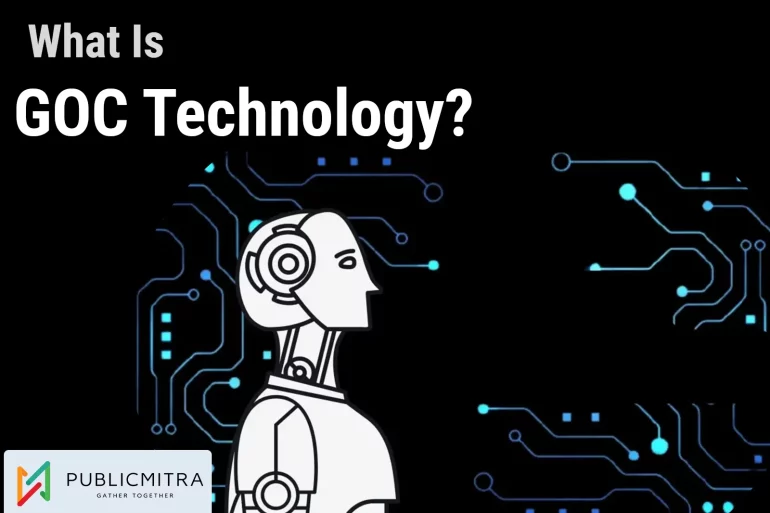Government-owned Contractor-operated (GOC) Technology is a dynamic and innovative approach that merges the power of government ownership with the expertise of private contractors to develop, maintain, and operate technology solutions. This article will delve into the intricacies of GOC technology, exploring its inner workings, benefits, applications, and the promising future it holds.
GOC technology represents a collaboration between government agencies and private-sector contractors. It empowers the government to maintain ownership of critical technology assets while leveraging the specialized skills and resources of contractors. This approach is particularly prominent in sectors where security, scalability, and efficiency are paramount.
How Does GOC Technology Work?
To comprehend the inner workings of GOC Technology, it’s crucial to explore the process step by step. Let’s break it down:
Government Ownership
At the core of GOC Technologies is government ownership. The government holds the reins when it comes to crucial technology assets, ensuring control and oversight.
Private Sector Expertise
Private contractors, selected based on their expertise and track record, are responsible for the development, maintenance, and operation of these assets. Their specialized knowledge brings innovation and efficiency to the table.
Defined Roles and Responsibilities
Clear roles and responsibilities are delineated, ensuring a seamless partnership. The government sets objectives and standards, while contractors execute and manage the technology.
Ongoing Collaboration
Effective communication and collaboration between the government and contractors are essential. Regular assessments and audits maintain transparency and adherence to regulations.
Benefits of GOC Technology
GOC Technology offers a plethora of advantages that make it a compelling choice for government agencies:
Access to Private Sector Innovation: By partnering with private contractors, government agencies gain access to cutting-edge technology solutions and innovative ideas.
Cost-efficiency and Resource Optimization: GOC Technologies optimize resource allocation, reducing costs while maintaining control over essential assets.
Rapid Deployment and Scalability: The involvement of private contractors enables swift deployment and scalability of technology solutions to meet evolving needs.
Enhanced Flexibility: GOC Technologies provides the government with the flexibility to adapt to changing circumstances and technological advancements.
Applications of GOC Technology
GOC Technology finds applications in various sectors, each benefiting from its unique advantages:
Content Delivery Networks (CDNs)
Content Delivery Networks utilize GOC technologies to ensure the efficient and reliable delivery of web content to users worldwide.
Cloud Computing
In the realm of cloud computing, it plays a vital role in managing and securing data and infrastructure.
Other Applications
It is also prevalent in defense, healthcare, and critical infrastructure, where reliability and security are paramount.
The Future of GOC Technology
As technology continues to evolve, GOC Technology is poised for an even more significant role in shaping the future:
Advancements in Security: It will continue to enhance security measures, ensuring the protection of sensitive data.
Integration with Emerging Technologies: The integration of GOC with emerging technologies like AI and IoT will drive innovation and efficiency.
Broader Adoption: More government agencies and industries are likely to adopt GOC technology to stay competitive and secure.
Some GOC Technology Types Work:
Government-owned contractor-operated Technology typically involves various activities related to technology solutions and systems. Some of the common tasks and responsibilities within this framework may include:
Development: Private contractors work on designing, creating, and developing technology solutions or systems according to the government’s requirements.
Maintenance: Contractors are responsible for the ongoing maintenance and support of the technology, ensuring that it functions effectively and efficiently.
Operation: Contractors may operate and manage the technology on a day-to-day basis, ensuring its proper functioning and performance.
Upgrades and Enhancements: As technology evolves, contractors may be tasked with upgrading or enhancing existing systems to meet new requirements or take advantage of advancements.
Security: Ensuring the security of the technology and the data it handles is a crucial aspect. Contractors often implement security measures to protect against threats.
Conclusion:
In conclusion, Government-Owned Contractor-Operated (GOC) technology is a powerful approach that combines government control with private sector expertise. Its benefits in terms of innovation, cost-efficiency, and flexibility make it a vital player in various sectors. As we move forward, GOC technology’s role in shaping the technological landscape is bound to expand.



